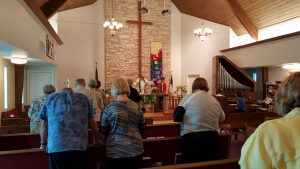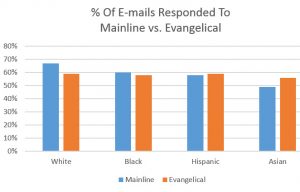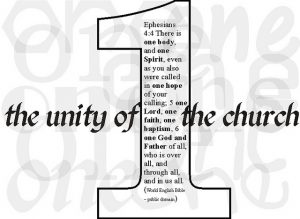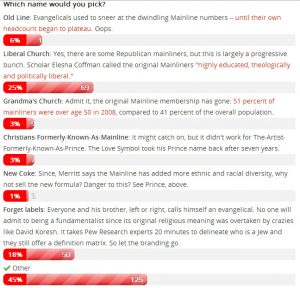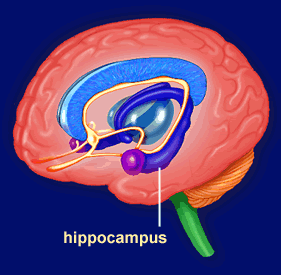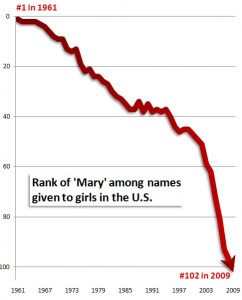How does someone with more than fifteen years of parish ministry experience search for a church when presented with the opportunity to connect with a community of faith as an active participant rather than serving as a pastor or staff member? In my case the answer is a work in progress. Last September I relocated to North Texas after living in Southwest Florida for eight years. Immediately, my wife and I started our search for a church. Despite my travel for work, we have managed to Read More …
Mainline Protestant
Church Shopping: Not Happening Today (#1597)
Almost a month ago I preached my last sermon as a Transitional Pastor before relocating across the country to start a new job in healthcare. This change led my wife and I to begin our search for a church near our new home. The first Sunday we did not attend church as I was busy moving. The next Sunday my wife and I visited a nearby Lutheran congregation (ELCA). The third Sunday we visited a local Presbyterian (PCUSA) congregation. Today we will not be in church Read More …
Racism: A Mainline Reality (#1572)
Meet the Researcher Bradley (Brad) Wright is an associate professor of sociology at the University of Connecticut where he studies American Christianity and spirituality. He is the author of two books: Christians are Hate-Filled Hypocrites… and Other Lies You’ve Been Told (2010 - my review), and Upside: Surprising Good News about the State of Our World (2011 - my review). Research Overview Wright and another researcher researched how Christian churches Read More …
Am I a Christian? (#1505)
Christianity is the world's largest religion. Nearly 1 in 3 people (31.5%) are Christian. In 2011 following extensive research, Pew released "Global Christianity: A Report on the Size and Distribution of the World's Christian Population." They found: About half of all Christians worldwide are Catholic (50%), while more than a third are Protestant (37%). Orthodox communions comprise 12% of the world’s Christians. Other Christian groups, which make up the remaining 1%, include the Church Read More …
The Day the Mainline Disappeared (#1457)
According to a new Pew Research Survey: People think more positively about their own religious groups, or about groups that their friends belong to, and On a scale of warmest/most positive feelings to coolest/least positive feelings, Americans have warm feelings toward Jews, Catholics and Evangelical Christians, neutral feelings about Buddhists, Hindus and Mormons, and cooler feelings toward Muslims and atheists. While this data is interesting, it is also troubling. As a Read More …
A New Mainline (#1204)
Mainline Protestantism has transitioned from American's dominant form of Christianity to a mere 18% of the adult population. Many forecast continued decline. Recognizing the issue with the name, Cathy Lynn Grossman is inviting you to take a poll to propose a new name for the mainline, which includes a "dozen church groups . . . including United Methodists, Episcopalians, Evangelical Lutherans, Presbyterians (USA) and American Baptists)." The options she offers are Old Read More …
Imagine an Institution (#0386)
A short illustration, posted on April 20 by Jerry Bowyer on the forbes.com blog, was printed in the May 31, 2011 edition of the Christian Century: Imagine an institution that requires its leaders to attend not only college, but graduate school. Imagine that the graduate school in question is constitutionally forbidden from receiving any form of government aid, that it typically requires three years of full-time schooling for the diploma, that the nature of the schooling bears almost no Read More …
Do Mainline Protestants Really Have Bigger Brains? (#0384)
A recent study funded by the National Institutes of Health and the Templeton Foundation suggests that mainline Protestants have larger brains than those with other religious affiliations. Yonat Shimron's article summarizes the findings: It found an association between participants' professed religious affiliation and the physical structure of their brain. Specifically, those identified as Protestant who did not have a religious conversion or born-again experience — more Read More …
The End of Mary (#0343)
Philip N. Cohen, professor of sociology at the University of North Carolina at Chapel Hill, recently wrote two posts (A and B) on his blog about the declining popularity of the name Mary. To put the trend in perspective he offers these remarks: For the first time in the history of the United States of America, the name Mary is not in the top 100 given to newborn girls. Mary was the #1 name every year in the Social Security name database from 1880 — it’s first year — to 1961 (except Read More …
Learning from Gen Y: Thoughts of a New Reformation (#0324)
Bradley N. Hill, a minister in the Evangelical Covenant Church, recently wrote an article for the Christian Century suggesting that the way most churches operate (an attractional model) will never effectively engage Generation Y (those he characterizes as being born between 1976 and 2000) for many reasons including: . . . advertisement is just part of the background white noise of our culture. No impersonal website or advertisement, no program or event flyer, poster or radio spot will entice Read More …

